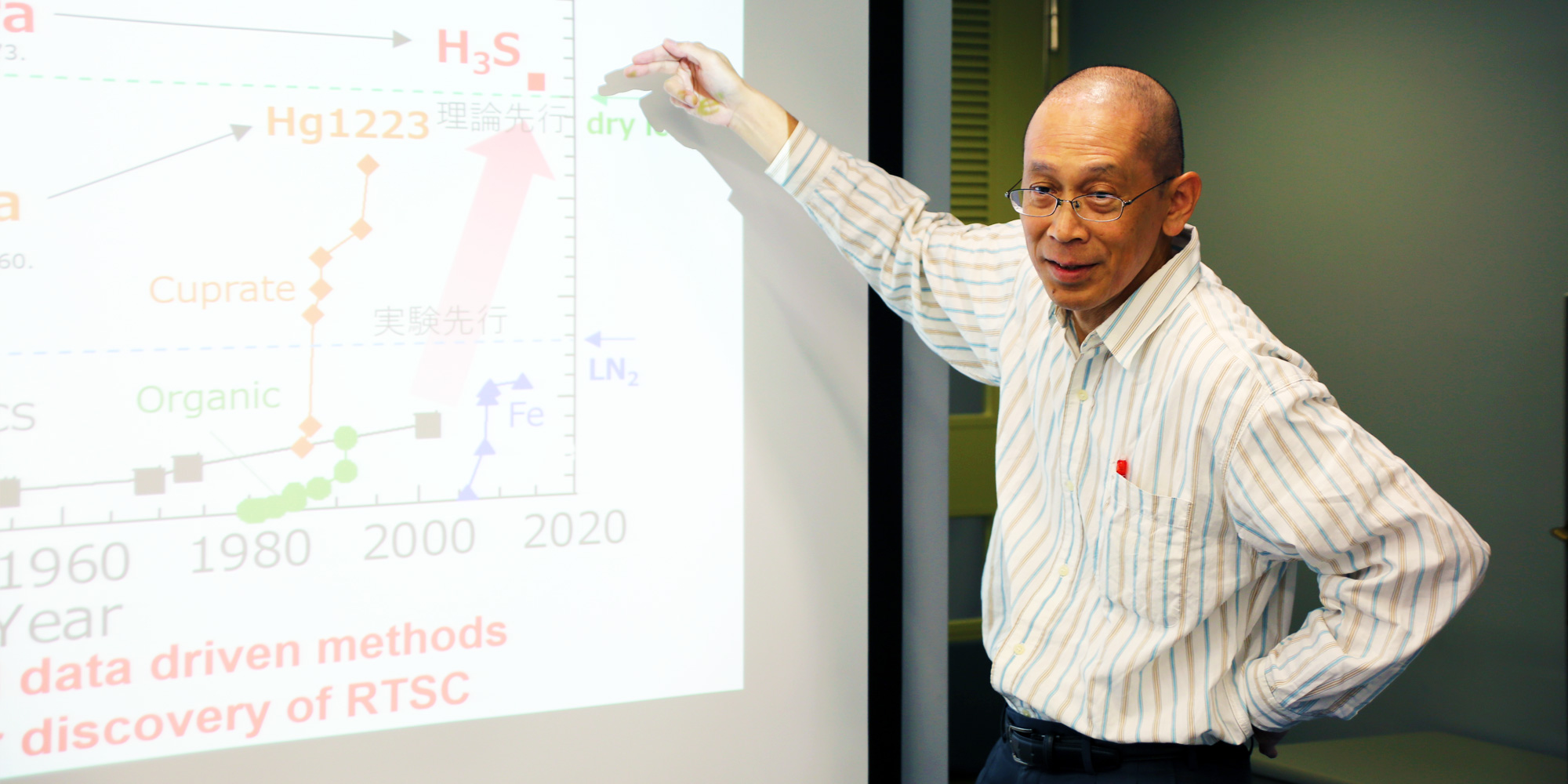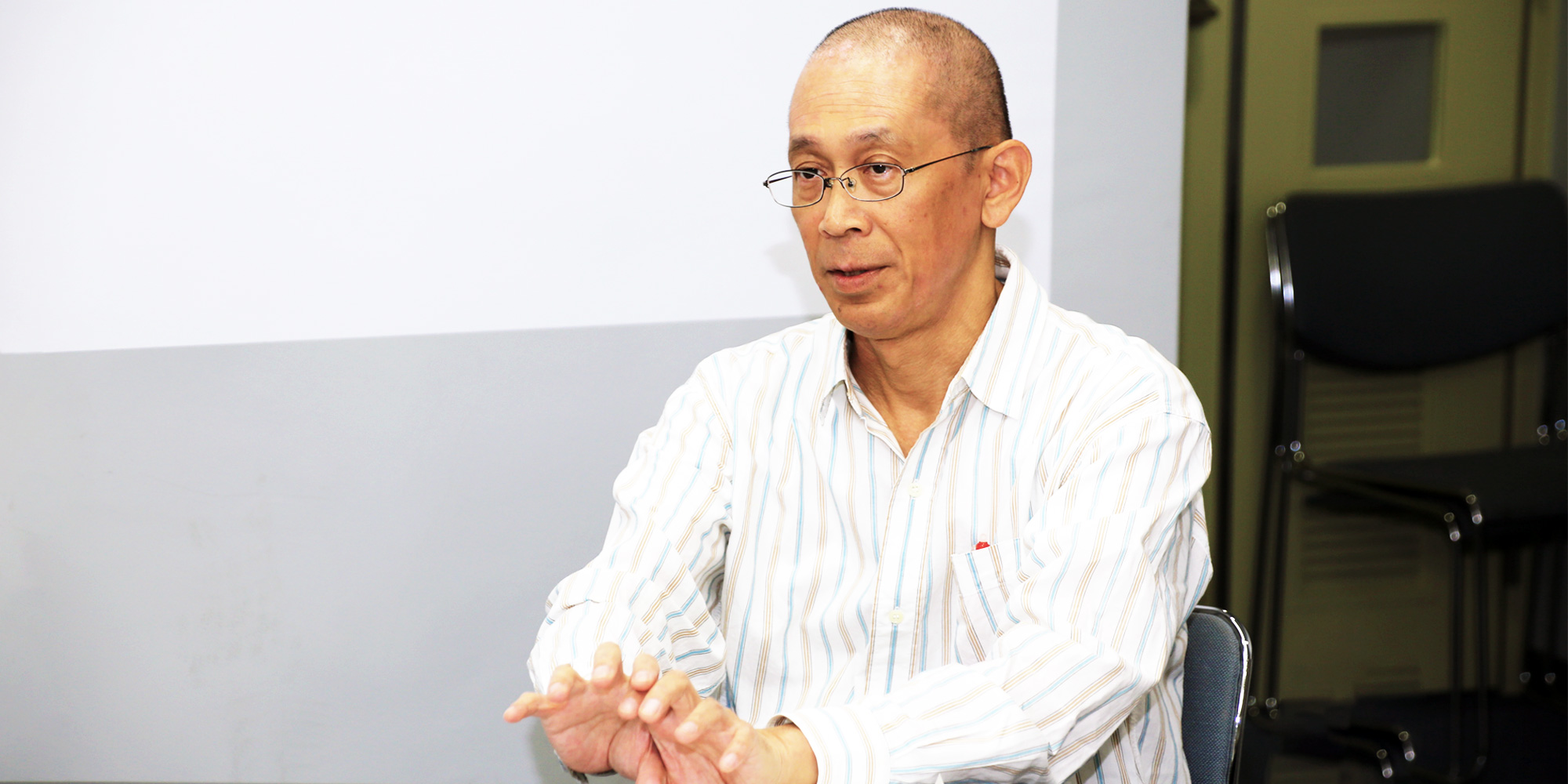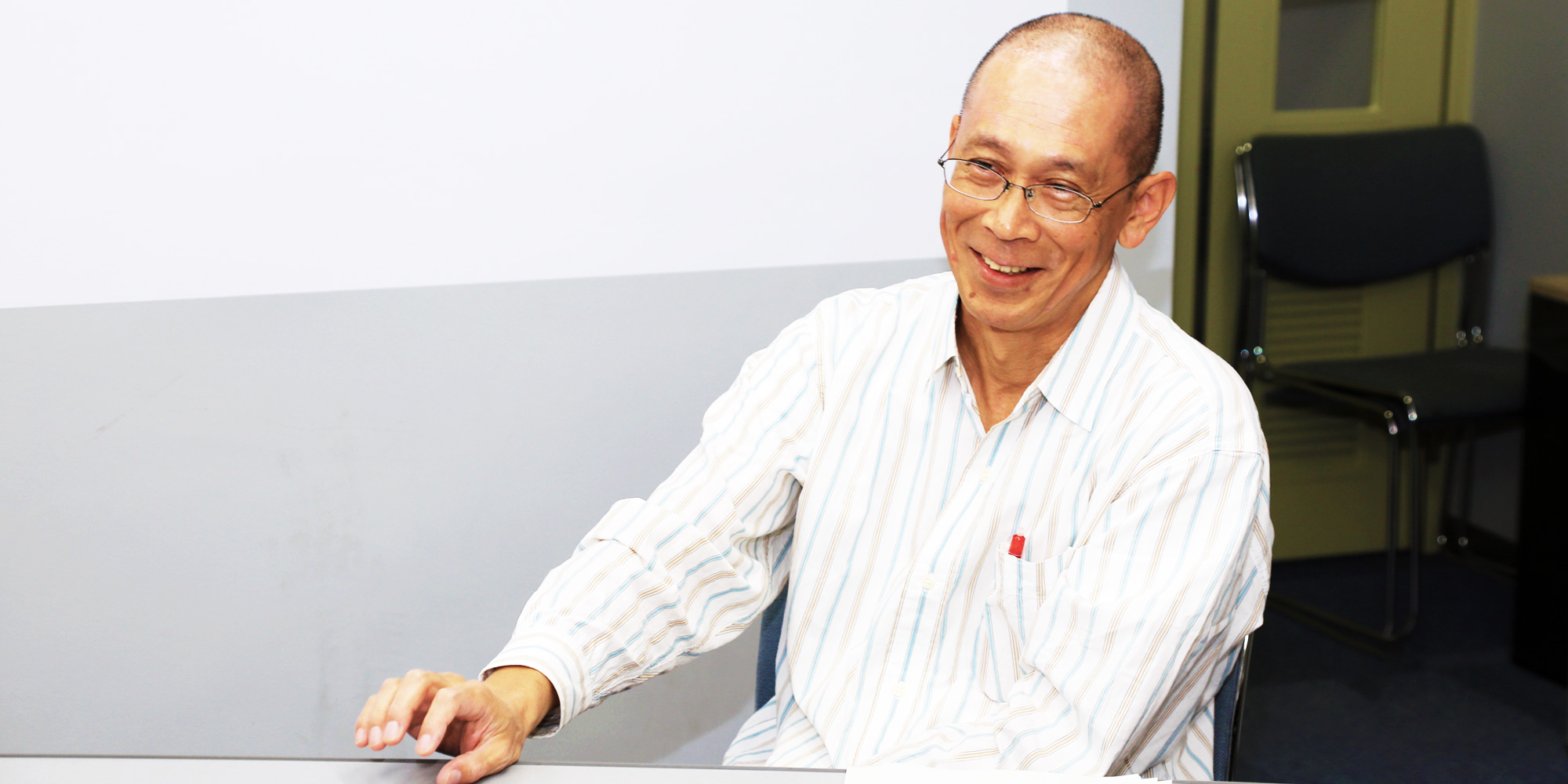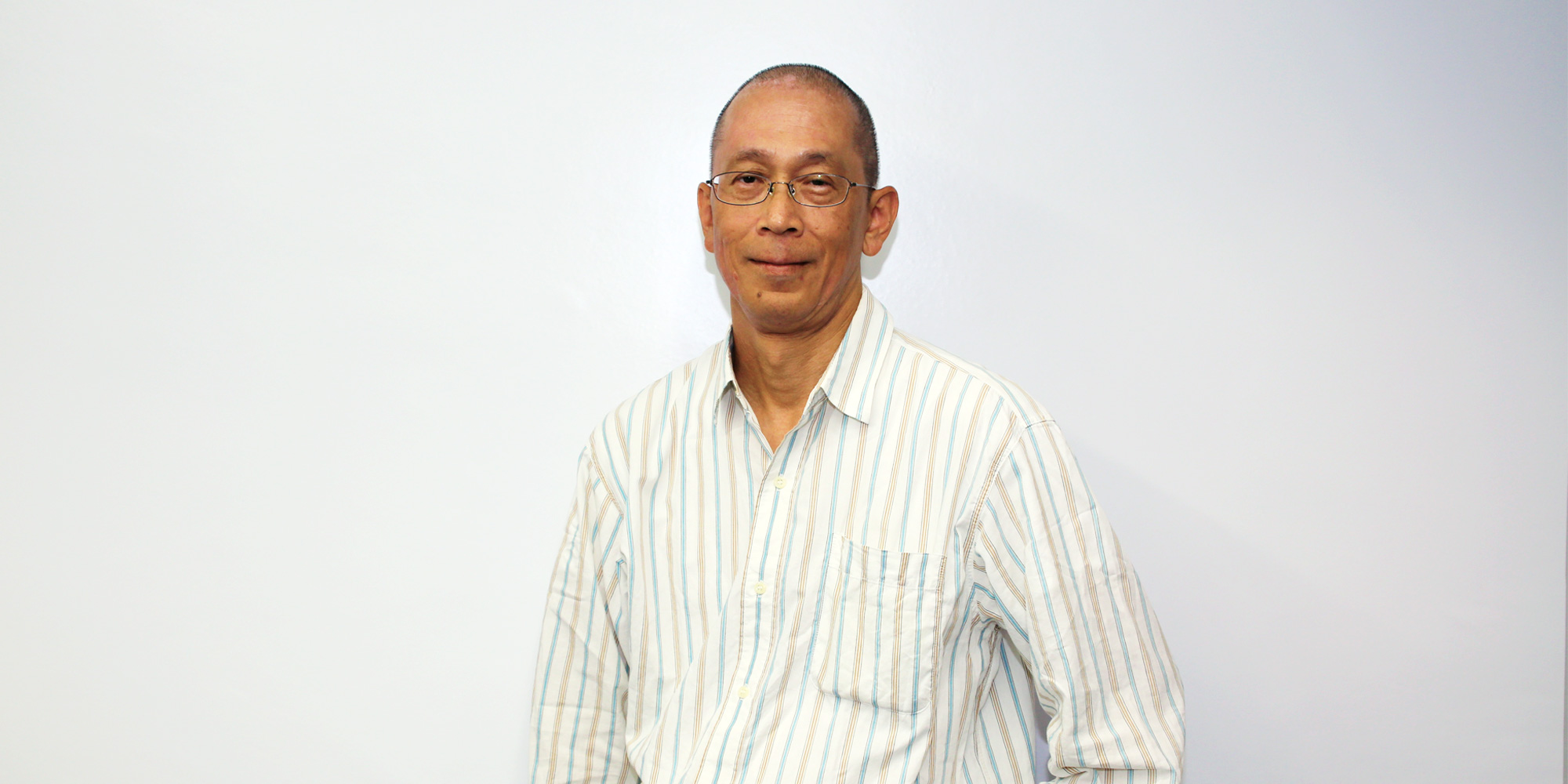An Interview with Dr. Yoshihiko TAKANO
Yoshihiko TAKANO
MANA Principal Investigator
Group Leader of the Nano Frontier Superconducting Materials Group, WPI-MANA
With their ability to transport electricity without loss and at zero resistance, superconductors are a technology that could solve a host of environmental and energy problems. The Nano Frontier Superconducting Materials Group at MANA, led by Prof. Yoshihiko Takano, is focusing on the physical properties of high-temperature superconductors, as well as carbon nanotubes and other functional materials. The group is also developing cables incorporating new superconducting materials. Recently, they have been searching for new substances by utilizing machine learning, and have discovered a series of new superconductors, as they work toward the ultimate goal: room temperature superconductivity.
Currently, this research requires extremely low temperatures and extremely high pressures, so the team is also developing artificial intelligence for materials search, as well as high-pressure technologies.
− What inspired you to enter the field of superconductivity?
When I began my university studies in Japan, superconductivity was being talked about as a key technology to solve the world’s energy problems, so I decided to enter the field. I initially worked on high-temperature superconducting cuprates.
Later I moved to the Institute of Solid-State Physics (ISSP) at the University of Tokyo, where I started a small project to investigate new materials, and discovered the niobium oxide superconductor KCa2Nb3O10. I put this material into an n-butyllithium liquid and kept it there for a few days; the material integrated, and gradually became superconducting.
Superconductivity is of course a physical property, but the reaction between liquid and a solid is soft chemistry, so by using a combination of physics and soft chemistry, I was able to find this new material. Many people who read my paper called the material a "tsukemono chodendo-tai", meaning pickle superconductor.

− You are famous for discovering a new superconductor using red wine.
What made you think of that?
Well, we could have used soft drinks or soy sauce or something. There are many possibilities. But if you use red wine, you can drink some too, and maybe you will feel good. Just like humans are attracted to each other instinctively, people and materials may be naturally attracted to each other. You could say these are both a kind of chemical reaction
We tested a material, FeTe0.8S0.2, in various alcoholic drinks and, to our surprise, it showed excellent superconducting properties after only one day. We tried beer, red and white wine, Japanese sake, shochu, and whisky, and with various concentrations of ethanol and water. The samples heated in alcoholic drinks all showed greater superconductivity, which was not dependent on the alcohol content. We found that red wine was the most effective.
After discovering this superconductor, I wasn’t sure how the property arose, but I finally figured out the mechanism -- organic acids in the wine integrate the excess ions, inducing superconductivity.
Our results caused a lot of excitement. I was invited to many lectures to talk about it, and one of my friends even posted the paper on his office door.
This is a different approach from most research. Of course, there is a big difference between pure chemicals and red wine. The key difference is that there are 1,000 or more compounds in the wine, so we may not know which compound induces the superconductivity, but we know the answer is somewhere in the cup, and as we eliminate the possibilities, we approach the answer, like a detective.
− What are the main challenges for MANA?
Room temperature superconductivity is one of MANA’s grand challenges, and when we succeed, it will start a revolution -- with zero resistance at ambient conditions, we will be able to send electricity around the world with zero loss, from producing places such as solar farms in deserts, to wherever it is needed. This would solve a lot of the world’s energy problems, as well as alleviate climate change.
It’s very difficult right now, though. One of the most promising materials is metal hydrogen, but to make it, to achieve metalization, you need 400 gigapascals (GPa) of pressure, conditions you find at the center of the Earth. We can’t create such high pressure -- maybe 200GPa is possible now -- but the metalization pressure would decrease if we combined hydrogen and some metal. For example, lanthanum and hydrogen can be metalized at 260GPa. The key point is to determine the correct target material, and that requires a lot of calculation, as well as machine learning.
Again, it requires a multi-disciplinary approach. We need extreme high-pressure techniques, which are being developed by geophysicists to replicate conditions deep underground. That’s why I'm collaborating with the geophysics group at Geodynamics Research Center at Ehime University. We now have three core members in our group -- one working on high pressure, one on AI, and the other on materials.

− Superconductivity is a so-called macroscopic quantum effect. Could you explain?
These are quantum phenomena that occur at a macroscopic scale. When you scale down to nano size, at a certain point a material’s properties suddenly change, and it exhibits quantum effects, such as superconductivity, photo emission, flame reaction, tunneling effect and so on.
Superconductivity arises when two electrons bind together at low temperatures to form a Cooper pair, whose quantum property is the origin of zero resistance. If enough Cooper pairs are involved, the phenomenon can be experienced at human scale, with the naked eye -- the macro scale. You have zero resistance no matter how long the cable is -- 1 meter, 1km and 1,000km superconducting cables all have zero resistance.
Nano-level phenomena are connected like beads to create one big phenomenon. For that reason, superconductivity research itself will lead to the elucidation of nano-systems. Superconductivity research has a wide range of implications and possibilities, from the nano-scale to solving global problems.

− What motivates you in your research?
For me, it's the feeling of being a pioneer, of opening up a new field. MANA is focusing on the goal of high-temperature superconductivity, which is a huge undertaking. But there are many, many small and exciting discoveries to be made along the way, such as our finding that compounds in red wine can induce superconductivity.
I take many different approaches in my research. Each should be a unique path that combines different fields, such as electrochemistry and physics, or soft chemistry and physics. This approach keeps things interesting, and we almost always get a new result.
Also, I like to work with students. Their knowledge is limited, of course, because they lack research experience, but they have energy, and lots of ideas.
I have one more message for young scientists -- what I call the ABC of research. A is become addicted to research -- not just like it, love it. B is believe in your inspiration, and C is challenge yourself -- and never give up.
− What's the secret to finding exciting discoveries?
One of the things I value is serendipity, or unexpected good luck. Serendipity is the key to the treasure chest. It may seem like mere luck, just a fortunate happenstance or a pleasant surprise, but it only happens to people who are working, and are open to it -- people who are testing the boundaries, pushing the work forward.
I always tell my students: If you don’t try, you’ll never achieve anything. Work hard, and work fast. Your first idea may not be correct, but even mistakes can generate valuable experimental results. As the saying goes: “If you don’t shoot the arrow, it doesn’t hit the target.”
#####


